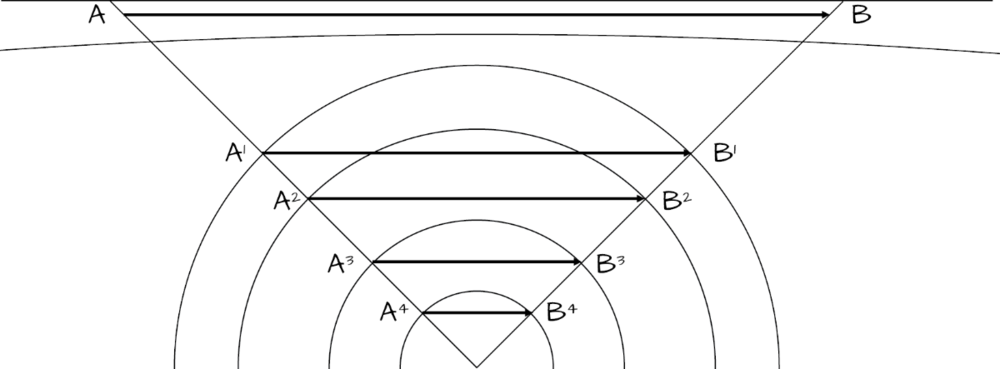Search the Community
Showing results for tags 'gurps'.
-
Figuring out (heh!) the warp and the nature of warp travel is another arrow to add to the quiver of a TTRPG in the 40k setting. Doing so has to of course balance the background materials on the subject (mostly from WD139/140), the various themes (mostly oceanic/sub-oceanic), the official 40k TTRPGs, and the common hyperbolic statements and descriptions that find their way into the novels. Quite a bit of these materials, or thoughts rather, have long-since bit the dust on sites such as Portent/Warseer, 40kOnline, and the Anargo Sector Project, so I thought that I would try and rekindle them here. :) Principle Sources: Realms of Chaos (Slaves to Darkness; Lost and the Damned), WD 139, WD 140, and Watson (Inquisitor). Others as they surface from the darkest recesses of my mind, or as suggested by anyone who drops in their few pennies. * * * SEEING THE WARP (aka "Warp Sensors") Ala Watson (Inquisitor) this is a thing from back in the day and integrated into the premise of the "calculated warp jump", or the notion that slow warp travel is relatively safe and was likely the norm back in the days of the Golden/Dark Age of Technology (G/DAoT). Vitali Googol, when piloting the ship Tormentum Malorum, is able to look onto a screen and see a data visualisation of the warp. This means that computers (cogitators, if you must) are able to process data from some form of sensor and produce an image of local warp conditions that are distinct from the vision of a Navigator. This seems to play merry heck with modern background, so my take on this is to make only the upper portions of the warp---the closest conjunction between the matterium and the immaterium---as resolvable by such sensors, thus the domain of the calculated warp jump. Now, just because such sensors can see the upper-most reaches of the warp doesn't mean that they can interpret all the data that they are processing (more on this later). Furthermore, to penetrate the Veil between the immaterium and matterium also means that doing this is going to take a fantastic amount of power---perhaps the same or close to the amount that they would use when transitioning into the warp. So, how does this play out? Well, our ship sitting at or beyond the "warp zone" (more on that later) has to use fantastic quantities of energy to open up a "window" into the warp so that they can observe it. The navigational computers then have to study the warp and plot a course to their destination, something that has to be done ahead of time because of the rapidity of changes and the difficulty (?) of making course corrections while in the warp. This would mean that the amount of time between the observation/measurement and the amount of time that it might take to "warm up" the Warp Engines are going to be significant---it would allow drift between the observations of the warp and the warp-as-is. Depending on how turbulent the warp is, this would make the plotted journey less reliable the greater the time difference between observation and journey. < Okay, that might need to be filed away for inclusion in things like "Navigation rolls" or situational modifiers that impact that roll. > A BRIEF FORAY INTO THE NATURE OF THE GELLER FIELD The nature of the Geller Field is something that I do, ah, parallel a little bit from the main background for sheer level of interest. As described overall, the Geller Field is a bio-psychic energy field that surrounds the ship providing, in essence, an "air bubble" of reality. When this is turned off or otherwise ruptured, the warp pours in and, of course, the daemons. Because, of course, they're allows everywhere in the warp. < rolleyes > This is fine by me, but my alterations are thus: Turning off the Geller Field in the upper-most reaches of the warp is not immediately disastrous. Crew do not go instantly blotto, the laws of physics do not break down, people are not melted through the deck or bulkheads---the basic nightmare of The Philadelphia Experiment merged with Escher and Lovecraft is not inherently a thing. This is for the same reason that warp sensors and cogitators can interpret the upper layers of the warp---it's mostly "real". Ish. Real-ish adjacent. The other reason that you don't want to turn off the Geller Field is that it is a cross between the aforementioned "reality bubble", but also the sails of the ship; the motive force. Add "etheric" in front of Age of Sail terminology and it will work. Etheric sails. Etheric rudder. Etheric middenmast, or whatever. Physical or field structures that make the ship go forwards and which are controlled by the computer (calculated warp jumps) or the Navigator (err, navigated warp jumps). So, turning off the Geller Field in the uppermost layers of the warp (henceforth, The Shallows) is not insta-death. It also means that you've lost the wind from your sails and are becalmed. You're no longer a moving target, now you're a stationary target. Oopsie. GETTING INTO THE WARP---The "Warp Zone" This is the "safe" distance at which the "warp density" reduces to make it possible to open up a gateway to the warp. This is a section that I'm going to have to come back to because I've forgotten the formulae that I used (oops). IIRC it was based upon a gravitational calculated derived from the TTRPG 2300AD: Man's Battle for the Stars (i.e. when the stutterwarp drive would activate) from the central star of a system and/or nearest astronomical body, but also modified by the population of an astronominal body (e.g. the more people, the closer to said body the "warp zone" was). The "Warp Zone" also serves at the point that natural warp gates may occur (as they did in the old background), which would potentially be a huge economic benefit even while simultaneously being a strategic nightmare (i.e. a point in-system that you can enter the warp and your potential enemies can exit it). More later. THE STRUCTURE OF THE WARP Just like the ocean is divided into different zones, so too is the warp. Here's some quick borrowed terminology from oceanography to help out: Coastal aka "The Shallows". The uppermost layers of the warp and/or those closer to the minimum distance 'warp zone' (stable/safe, but potentially dangerous to jump into the warp from). Pelagic aka "The Deeps". The point at which you stop wading in The Shallows and start going into the realm of the ocean proper (aka the Warp Threshold, as it were): Epipelagic [re-name]. The shallow areas of the warp further away from the Warp Threshold. Bathypelagic [re-name]. The realm of the Navigator. This is where you dive beneath the Shallows of relative reality into the increasing "pressure" of unreality. Abyssopelagic ["The Realms of Chaos"]. The Realms of Chaos and Unreality. Doh! Hadopelagic ["Hades"]. The specific Realm of a Chaos God!? I just wanted to dive back into those warp sensors and what they would "see", and represent on-screen, at the various points: The Shallows. A vibrant see of shifting colours representing the tides and eddies of the deeper warp. Occasionally you'll see areas of black---either fast moving shears shifting parallel to the Conjunction Manifold (the Veil), or subducting currents that drive "reality fragments" deeper into the warp (the coloured bits) and see riptides and upwellings of the deeper warp. For calculated warp jumps, and for relative safety, you want to avoid the black. (Insert warp-sailor terminology about "The Black" etc.). The Deeps. The deeper you go into the warp, the more useless the sensors will be in that they will just show... black with the occasional colour flashes representing "reality fragments" that have been driven or sucked down into the depths. This is the province of the Navigator's Eye. Turn off the Geller Field and its "Etheric Sails" here and your SouttaL. The warp will come pouring in. Unreality will break down reality and, with the inrush of the warp, come the entities of the warp---natural (warp flora and fauna) and the unnatural gribblies that are daemons. WHY NAVIGATED JUMPS? So why Navigated Jumps over Calculated Jumps? Here you're going to have to get your geometry head on and imagine the arcs of circles of different radii: Nothing new with the above, but the only "new" thing to consider would link to the terminology: A-B. A Calculated warp jump. The Shallows. A1-B1. Epipalagic. A2-B2. Bathypelagic. A3-B3. Abyssopelagic. A4-B4. Hadopelagic. Better names are required (as above), but if you want to get from point A to point B real fast, you might have to travel through the actual Realm of Khorne---not for the feint of hearted, but potentially something that Yvraine and others did in Gathering Storm. Heck, you may even be able to go back and forward in time, here, because the Ruinous Powers are thought to exist at all points in time at once. So, in real space you go from points A and B in interstellar place and it takes a godawful period of time (sans relativity of not). As you dive deeper into the warp (downward arrows), you travel between A1 --> B1, A2 --> B2, and so on. As you go deeper into the warp, the distance between A' and B' (and A'' and B'' etc.) gets commensurately smaller, so the spatio-temporal "distance" between the points gets smaller. In short, you go faster. Woot. The warp is probably red like hyperspace from Babylon 5 because, as we are all given to understand, "Red wunz go fasta!" This means that the higher the skill of the Navigator, the deeper they can go into the warp but the more dangerous it is. Of course, the danger ramps up increasingly as you go deeper into the warp---the "currents" of unreality that much stronger. So in any given trip you're going to be weighing the odds of the local conditions of the warp (calm or stormy) versus how fast you want to get there versus how likely it is that you're going to get there (to your destination). :) You can actually calculate this using the distance table from WD 139/140. I'm going to do that later because it's something else that I've lost and I seem to remember that it took a little bit of calculation! :D
- 18 replies
-
- Background
- TTRPG
-
(and 1 more)
Tagged with:
-
Partially motivated by @Karak Norn Clansman, here's me just putting some thoughts down on paper, as it were, about something that I did and something that I might get back into doing. All while getting back into the wargame and painting some minis, because why the heck not. The Prelude... Back in the day, there was a kid played Warhammer Fantasy Roleplay (WFRP), which was in 1e in those days. Then another kid, with some other kids, played some more and someone decided to introduce what was then a Spirit Warrior ("Tuisich Novasmair") into the fantasy game, and 40k and WFRP were crossed over. Or over-crossed. Something like that. The point is, that I wanted to use a TTRPG to play in the 40k universe from that point. And, a little bit later, the wish was to come true and a fellow called "Andrew" (Fawcett, IIRC) would create a version of this using WFRP on a site called "Critical Hit". It was a little funky because, well WFRP is a bit funky mechanically speaking, but it gave you the tools that you needed to do a TTRPG in the 40k universe. Advance some years and preferences change. "Critical Hit" disappeared (though I still have a copy of the site) and I was no longer a fan of the system anyway. After playing a TTRPG at a frenetic pace of at least a system a week (sometimes more), I got tired of learning a new system and turned to a generic system with a silly name: GURPS. The Days of Yon (Portent)... So, back in the Dark Ages there was a site called Portent that ended up being a hangout place for people that really liked the 40k setting. Some of those, like myself, really liked the premise of either using it for a TTRPG or, related to that, filling in the blanks of the setting because that was fun to chat about and also kind of necessary to make a functional RPG setting. There were a ton of fan theories generated out of this time. Things like Brusilov's "Emperor's Daemons", astrological affinities with Primarchs, and even grand (and abortive) fan projects that aimed to create a whole Imperial sector containing around 21,000 star systems in detail*. Crazy times. (* More so than you see in the Calixis and Askellon sectors in the Dark Heresy RPG.) During that time, and Portent's lesser descendant, Warseer, I put together some working documents for GURPS covering some interesting parts of the setting but mostly necessary ones (can you do 40k without Marines?). Which brings us to... Now... After a hiatus from 40k for the past all-but decade-and-a-half, I was just getting over the hump in another TTRPG project (the Earthdawn/Shadowrun/Equinox meta-setting, again in GURPS) and just happened to take a look at the old 40k stuff. This was after I had bought some 40k minis in an attempt to persuade my son (yeah, that happened between then and now) and gotten bit by the bug again. A 3d resin printer later, some 40k adjacent fantastic sculpts and... Yeah. My general approach was to take the oldest materials as "true" and then layer on the latter explanations so that they integrated and So, digging out the 'ole fan materials to get back to writing (and to rewrite with new ideas and new background materials): Powers of the Mind. Psykers are everywhere, thus a key part of developing other setting materials. The system that I had created was, instead of the "random explosions" approach of Dark Heresy, based on the ideas presented in Ian Watson's Inquisitor (now Draco) where each psyker had a "psyker light" that grew brighter the more powerful they were and the more they used their powers. This was the slippery road to the City at the End and to damnation. I'm still working on the details, in particular the differentiation between the different Psyker Grades of The Assignment. That and trying to work out the the details on the Left- and Right-Handed Paths of Sorcery, Enuncia, and, of course, Eldar magic-tech. The Inquisition. An inescapable part of dealing with the release of Dark Heresy. This is pretty easy, with the only major difference being the inclusion of an "hidden order" to replace the Ordo Malleus after it was outed by Gav Thorpe (to the weakness of the setting IMO). Trying to figure this out is still a little bit messy given the nature of the Ordo Malleus. Otherwise it's all fairly simple and drawing information from other products in the line (e.g., GURPS Action 2 that deals with the kind of stuff that Inquisitorial retinues and retainers get up to). The Adeptus Astartes. Another inescapable thing. Plenty of work done on this, though it needs to be updated because of the "new" introduction of the Primaris. And, of course, new fan theories (I was intrigued by the Primarch "Tarot" that I saw somewhere on the board). The Adeptus Mechanicus. A slightly more progressive, less Canticles of Leibowitz, approach to the Cult Mechanicus based primarily out of the original Rogue Trader and information from Mechanicum and Titanicus. There's lots of fun to be had here balancing what used to be called the "Adeptus Me-Can't-icus" (they didn't know what was going on with respect to tech) and the "Adeptus Me-Can-icus" (they did know). Plus, figuring out The Mysteries and the Admonitions as they are generally known, and then the more secretive Prime Mystery and Admonition and the First Order Derivatives. From there to the Binary Dogma of Factionalism, the Paradigms of the Cult, and the hierarchy of what is, at its heart, a mystery cult. The Craftworld Eldar. Or perhaps just the Eldar in general. My favourite. A little bit of a different take on what GW has produced. Drawing inspiration from trinities across the different aspects of society and mythology... Governance divided into Ancestor (Past), Clan (Present), and Seer (Future) Councils. Limited number of Paths, but innumerable Ways... Etc. The Warp (untitled). A description of traversing the warp and its nature. A shorter piece, but one that goes into detail on Imperial space travel across the various editions and bringing it together into a (fairly) cohesive whole while also bringing in older materials (e.g. natural Warp Gates and how these relate to Warp Zones etc.). I'll be posting bits 'n' bobs here and there, but ultimately asking for perspectives and ideas for those willing to contribute them. Things generally become better when there are more eyes on the product (as it were). :)



